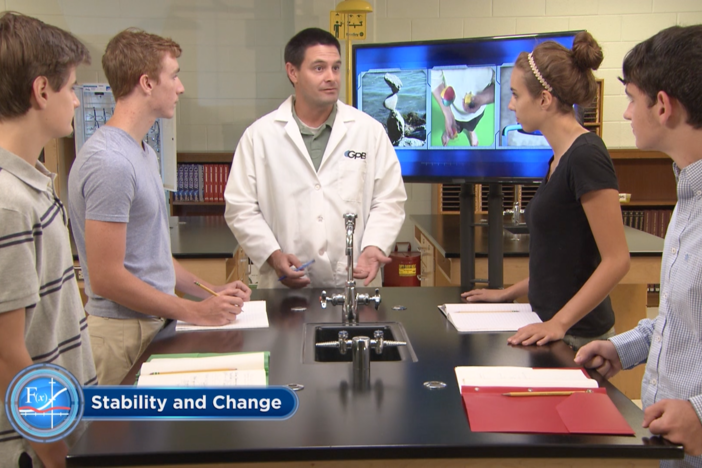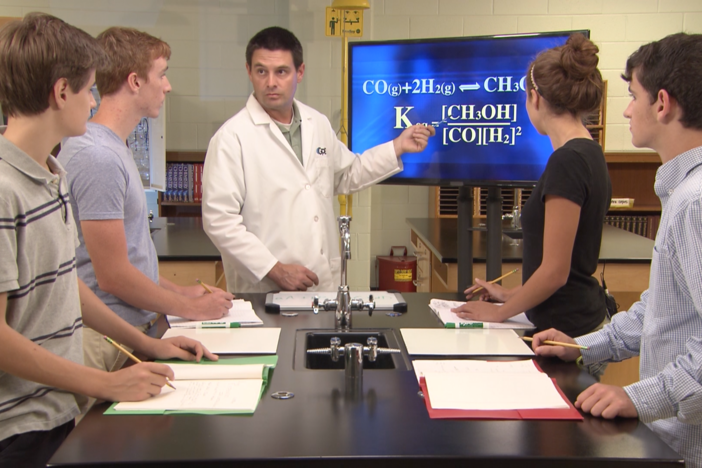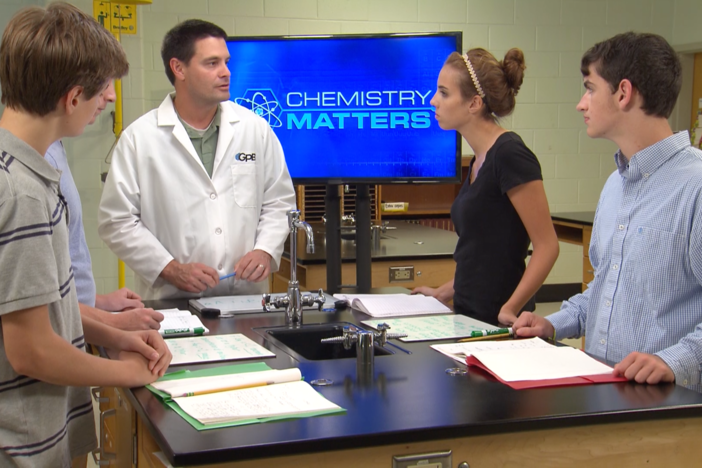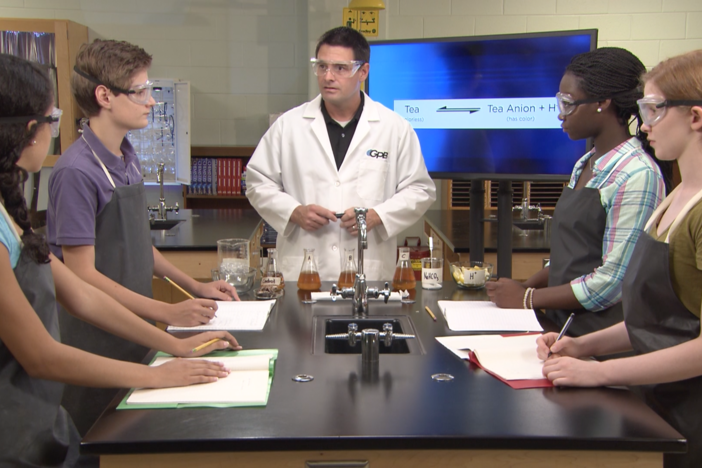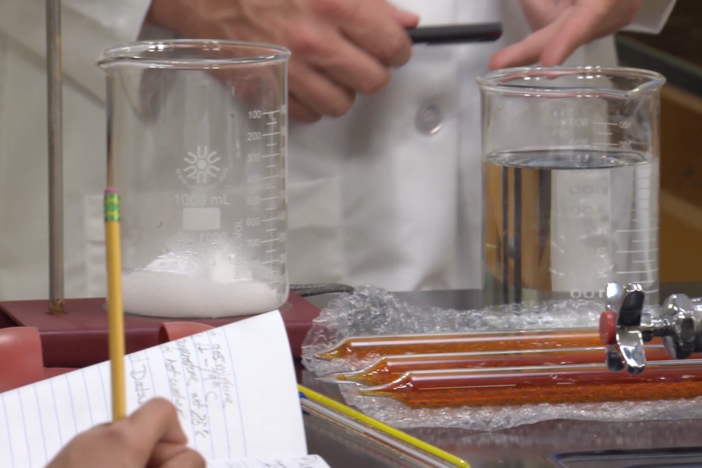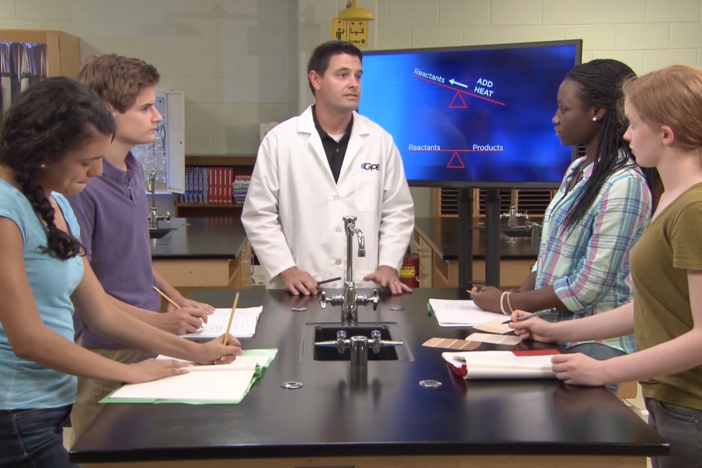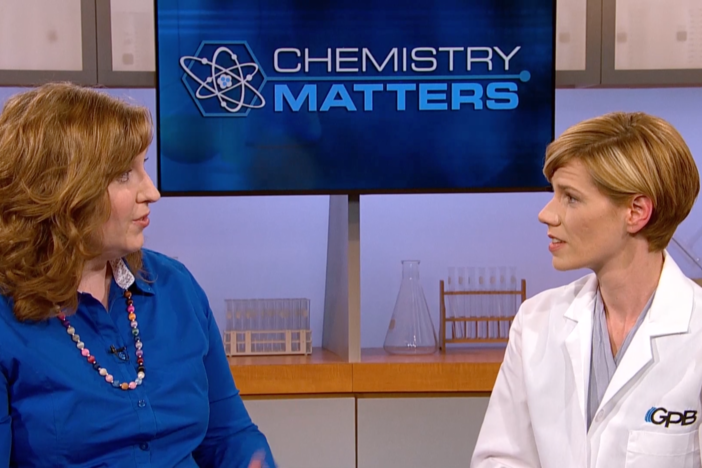Segment A: Chemical Equilibrium
Our host introduces equilibrium theories and the dynamic nature of chemical equilibrium. The students perform an activity using Legos® to understand the nature of how forward and reverse reactions affect equilibrium and the amount of products and reactants in a reaction.
Segment A: Chemical Equilibrium
Our host introduces equilibrium theories and the dynamic nature of chemical equilibrium. The students perform an activity using Legos® to understand the nature of how forward and reverse reactions affect equilibrium and the amount of products and reactants in a reaction.
Science
Obtain, evaluate, and communicate information about how to refine the design of a chemical system by applying engineering principles to manipulate the factors that affect a chemical reaction.
Plan and carry out an investigation to provide evidence of the effects of changing concentration, temperature, and pressure on chemical reactions.
Construct an argument using collision theory and transition state theory to explain the role of activation energy in chemical reactions.
Refine the design of a chemical system by altering the conditions that would change forward and reverse reaction rates and the amount of products at equilibrium.
chemical equilibrium - a state that is reached when the rate of the forward reaction equals the rate of the reverse reaction.
dynamic equilibrium - a state of equilibrium in which two opposing processes occur simultaneously with no net change.
equilibrium - a condition in which all acting influences are canceled by others, resulting in a stable, balanced, or unchanging system.
equilibrium constant (ksubeq) - the ratio of the concentration of products divided by the concentration of reactants.
Le Chatelier's Principle - a principle that states that when the equilibrium of a system is disturbed or stressed, the system adjusts to reestablish equilibrium by minimizing or countering the stress.
static equilibrum - a state of equilibrium in which no movement occurs.
The Haber Process - the process of synthesizing ammonia from nitrogen and hydrogen gases.
The Chemistry Matters teacher toolkit provides instructions and answer keys for labs, experiments, and assignments for all 12 units of study. GPB offers the teacher toolkit at no cost to Georgia educators. Complete and submit this form to request the teacher toolkit. You only need to submit this form one time to get materials for all 12 units of study.
